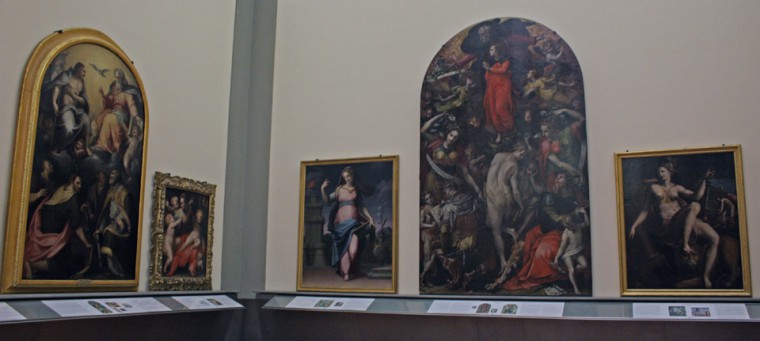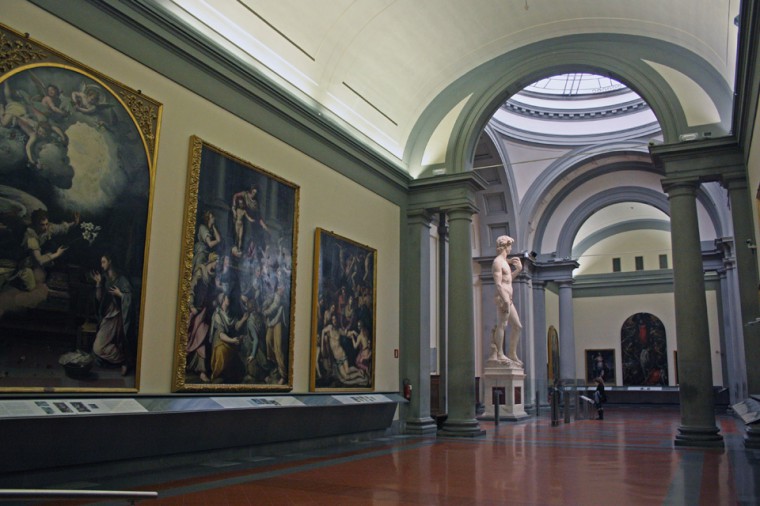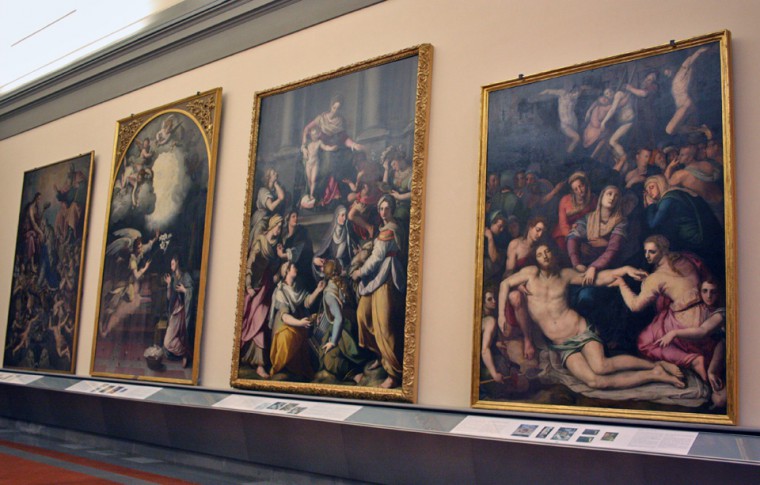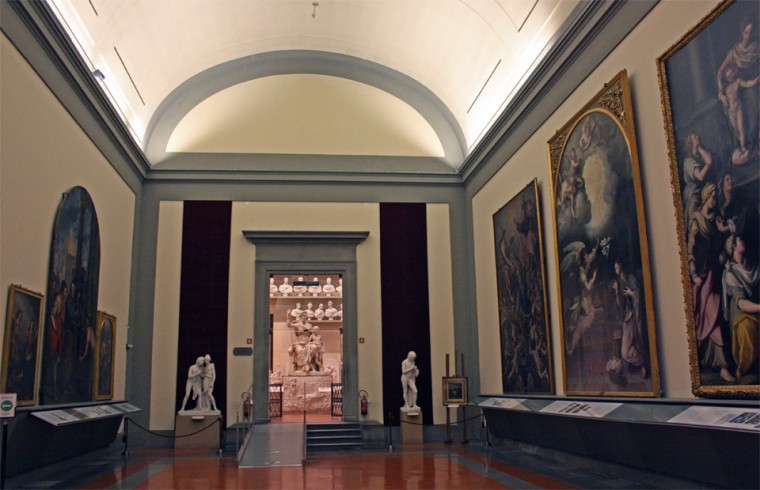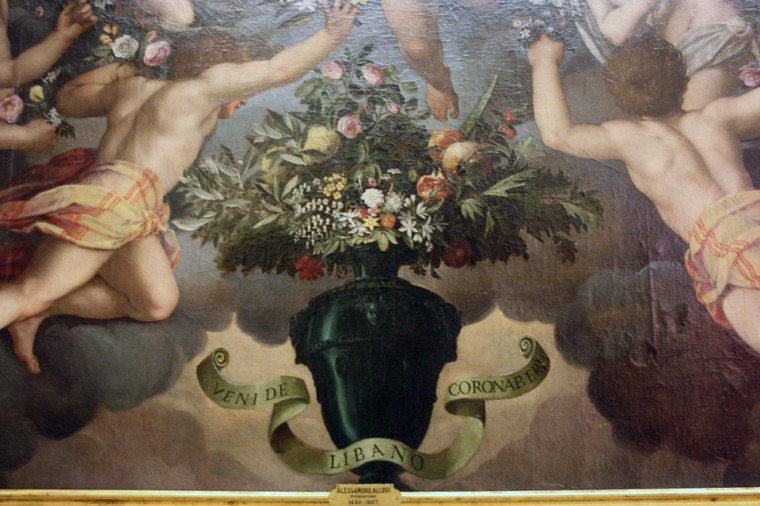The Tribune: Michelangelo’s David
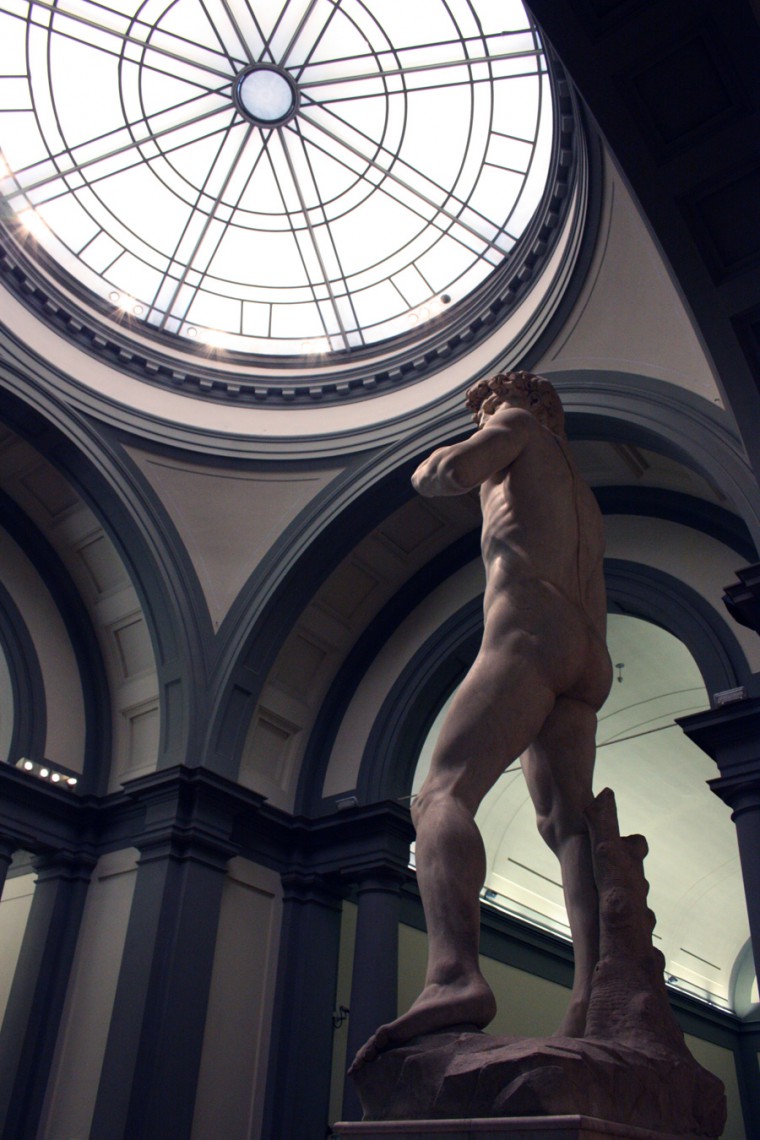
During the 1850s, there was an intense debate about the conservation of Michelangelo’s magnificent David, which had been standing outdoors in Piazza della Signoria since 1504. The architect Emilio de Fabris was entrusted to design a square-shaped Tribune within the Accademia at the end of the so-called “Gallery of ancient paintings”, corresponding to today’s Hall of the Prisoners. The David should have been placed in the center of the Tribune under a bright skylight, a halo-like dome, in 1873. In August of that year, the David, transported within a wooden frame, was removed from Piazza della Signoria and moved toward the Accademia on rails especially built for the move. But it wasn’t moved into the Accademia… since the Tribune wasn’t complete! Documents from the archive narrate that the statue then remained inside the wooden cart just outside, until 1882 when the Tribune was completed and opened to the public. This means David stood inside a wooden crate for 9 years!
At first, the side wings of the Tribune were used to exhibit copies of Michelangelo’s works and, later on, tapestries. Today, we can admire David ideally framed by artworks by other 16th century artists including Bronzino, Cecchino Salviati and Allori along these two wings of the Tribune. The choice of these artists is to emphasize their relationship with Michelangelo’s life, works and the cultural influence his works had on these artists.
Here we’ll just point out some of the works of art you’ll admire inside the museum on your visit!
Right Wing
In this area to the right of the David, we’d like to point out Francesco Salviati‘s Madonna and child with the young St. John and an angel. Apprentice for Andrea del Sarto, Salviati enjoyed a long, active career working in Florence, Rome and France, where he was engaged by the international Mannerism court in Fontainebleau.
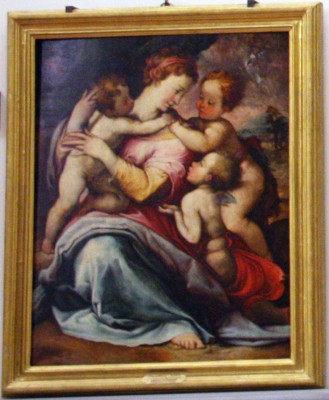
Left Wing from the Tribune
As you turn left from the David, you’ll find several works on both sides of the hall that you should stop to admire.
On the left, the first painting you’ll find is Santi di Tito‘s Deposition of Christ (oil on panel, ca. 1590). The large panel depicts a Deposition and the crosses of Golgotha, standing out against a clear sky in the background. They seem to frame the space in the foreground where the lamentation takes place. The body of Christ, almost entirely resting on earth, is held up by the Virgin, flanked on one side by St. John the Baptist, on the other by St. Catherine of Alexandria and the donor, dressed in a sophisticated armor decorated with the insignia of the Knights of the Order of St. Stephen. This character, whose coat-of-arms is painted on the shield at lower right, has been identified as Ernando Sastri of Spain, on whom this honor was conferred in 1576. The painting offers an intimate, contemplative tone, while the presence of the knight, kneeling at the far edge of the composition, his left hand opening outwards, links the setting to the admirers of the scene, involving you the viewer into the meditation, inviting you to emotional participation. Before restoration (in 2003), heavy repainting had practically covered the landscape in the background and obscured the sky and crosses, altering the sense of space and its relationship with the surrounding environment. The panel is signed by Santi di Tito on the lower left.
On the right, the first painting is Bronzino‘s Deposition of Christ (oil on panel). The artwork was commissioned by Cosimo I Medici for a Church in Portoferraio on the island of Elba, just off the coast of Tuscany. The large panel arrived at destination by ship, traveling down the Arno river as far as the harbor in Pisa, then over the open sea to the island. Bronzino worked for long on the Deposition together with his pupil Alessandro Allori, completing the panel in 1561, signing it on a large green vase at lower left. The painting should be read from the top, depicting Christ pulled down from the cross. From this episode, we are led through a serpentine-shaped path of figures to the central fulcrum of the composition, the scene of lamentation. The sculptural power of Christ’s livid nude and His modeled torso reveal Bronzino’s attention to Michelangelo’s models. Restoration in 2003 removed extensive layers of heavy repainting which obscured the original surface. The fortified city in the background behind the Hill of Golgotha, on the upper left, had become invisible before restoration. It may represent Portoferraio, with its three imposing fortresses, built by order of Cosimo I to provide defense against incursions of pirates. Among the figures, the bearded character on the left looking out has been acknowledged as Bronzino’s self-portrait. Below is an interesting look into the restoration process that the painting recently underwent.
The third painting on the right is Alessandro Allori‘s Annunciation (oil on wood panel, circa 1572-78). This large panel was commissioned by Sister Laura dei Pazzi for a convent in Montedomini. The scene of the Annunciation is set in a sober 16th-century Florentine chamber. The composition shows the Archangel Gabriel on a soft cloud about to kneel in front of the Virgin. He brings the message that she would be the mother of Christ, offering the symbol of purity, a white lily (Lilium candidum), to Mary with the right hand while pointing to the descending Holy Spirit from Heaven with the left one. Angels from up above are scattering various types of flowers from the sky. The composition is softened by the charming inclusion of a sewing basket while showing off the fine details of the embroidered pillow in front of the angel.
The fourth painting is yet another by Alessandro Allori, the Coronation of the Virgin Mary (oil on canvas, 1593). A triumph of flowers is the ideal, joyous frame to the Coronation of the Virgin painted for the monastry of St. Mary of the Angels in Florence. Allori accompanies the observer into an elegant and colorful Paradise composed of dozens of flower species used as iconographic attributes of the Virgin, containing multiple meanings. Thanks to their passion for science and collecting, the Medici family supported the creation of botanical gardens in Tuscany and their existence is of the utmost importance in the progression of flower painting and drawing. It is thus likely that Allori is able to paint a precise depiction from careful observation within these gardens. Allori added his signature along the border of the refined dark vase which features the colorful bouquet of flowers.






